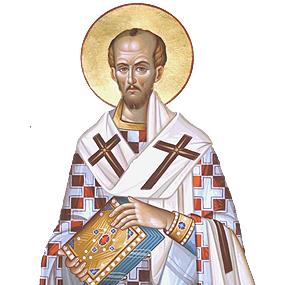Pillars of Byzantine Spirituality
Entering into a Byzantine church, the first thing that we notice is the architecture: dome embracing and protecting the nave. The dome represents the ancient symbol of eternity: circle. The circle in all ancient cultures stands for the enternal, never ending life. If you record the movement of the stars during a summer night, the circle is the shape they make. Therefore the symbol of eternity.
The nave, built in the shape of a square or rectangle, points to Tent of Meeting Israel carried during the forty years of the wilderness journey. This Tent was set off from the encampment of the Israelites by a fence making the shape of a rectangle. Thus, they were reminded "we are pilgrims" on the way to a homeland. We did not arrive yet to our goal. We cannot see the face of God. We are not allowed to come to His presence, we need Moses to enter and talk to the Lord.
Through the Incarnation, Death and Resurrection of Jesus from Nazareth, eternity enters human history. In Christianity, these two symbols are combined to proclaim the Good News that the invisible God became visible and the eternity meets our human limitations. In the Church, in the community of believers, the Incarnate Word comes to us to be with us. To let us experience Him through His Word, the Mystical Supper—Eucharist, and through the fellowship of the worshipping community.
This is the reason why we have Christ the Teacher painted in the dome. The three stain glass Resurrection scenes points to the fundamental message of our faith: Christ died and is risen to raise you just as he did Lazarus (stain glasses on the right, left and above the entrance to the nave).
The Icon screen—Iconostasis—reminds us of several realities. First, there are mysteries in our faith. You cannot understand and explain everything! How can we grasp that the ordinary bread and wine through the Eucharistic prayer becomes Body and Blood of Christ, though we still see and taste bread and wine? How come that the confession of sins and the prayer of absolution wipes away my sins? How can I explain it? You cannot! The Iconostasis is open during the different services showing and hiding at the same time. What we can see and understand is the cross—his death; the altar—tomb and Golgotha; his Word—the Gospel book, etc. However, there is more that is hidden in mystery.
Second, every mystery can be experienced though! We are called to enter into it. The central doors of the Iconostasis are called Royal Doors. They are decorated by the Icons of the Annunciation and the Gospel writers Matthew, Mark, Luke, and John. Its function is to call our attention to the offer made to the Virgin Mary, which is made to me everyday as well! If you have the same attitude as she did—openness to receive—then you will receive Christ, and enter into the mystery. You will have the same experience! The way is the Gospel, the Word of God! It is the Word that is proclaimed and leads us to embrace the resurrection and forgiveness of sins. It is the Word that leads us to gratitude! It is the Word that leads us to Eucharist. It is the Word that leads us to receive Christ's body and blood.
Third, the Iconostasis is built up with icons of the Mother of God, the Theotokos, Jesus Christ, and different other Saints. Every one of the Saints reminds us it is possible to meet the Lord; it is possible to follow Him; it is possible to enter the mystery! The Saints on the Iconostasis witness to their own personal experience with the Savior. At the same time, they encourage us to start/restart our own journey. Since the Church is the communion of living on this earth and those who already entered the glory of Heavens, the Saints are our companions and fellow disciples. Just as the Theotokos prayed for the needs of the bride and bridegroom in Cana, so she with all the Saints prays for us, supports us asking the Lord to help because "they don't have enough wine" (cf. John 2:3). I believe the communion of sains (Apostles Creed).
The liturgy is very dynamic, there is much movement! The Little Entrance with Gospel book, the Great Entrance with the Gifts to be offered, the priest coming back and forth between the altar and the people. Standing up and sitting, bowing down and "endless crossing". Is not life itself full of movement? We come to the church before the Lord. The Gospel book comes from the altar, from the Lord himself to his people. We bring our gifts to the Lord and He transforms them and shares His body and blood. This is but another sign of the vital interaction between Christ and his disciples. However, there is one important place in this interaction: Ambon—the space in front of the Royal Doors. It is a semicircle that ends in the sanctuary forming the whole circle. It is from there that the deacon reads the Gospel, sings the petitions. It is from there that the priest gives the blessings, preaches the Word, distributes the Eucharist. It is from there that the priest sends us out into the world through the dismissal. The Ambon is the symbol of the stone that was rolled away from the tomb of Jesus. Consequently, whatever we do during the Liturgy, we do it because of the Resurrection. Our liturgical life is Resurrection based!
